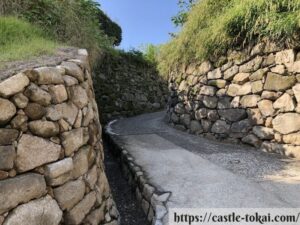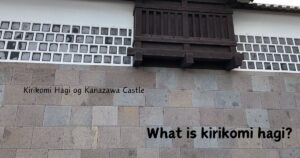“Uchikomi-Hagi” is a distinctive stonework technique employed in the construction of Japanese castles. It is characterized by carefully shaped stones that are tightly fitted together, creating a visually appealing and highly durable structure.
To prevent collapse, smaller stones called “mazumeishi” (間詰石) are carefully inserted into the gaps between the larger stones.
Uchikomi-hagi is a stone masonry technique used in Japanese castle walls, developed during the latter half of the Sengoku period and early Edo period. In this method, the surface of the stones is hammered to create protrusions and indentations. This interlocking surface increases the strength of the stone wall, as the stones can interlock with each other more effectively. It also creates a smoother appearance on the wall’s surface.
Uchikomi-hagi evolved from the earlier Nozura-zumi technique, where largely unworked natural stones were stacked, leaving gaps that needed to be filled with smaller stones. By creating protrusions on the stone surfaces, Uchikomi-hagi reduced the need for filling gaps, as the stones could interlock more tightly.

Uchikomi-hagi of Okazaki Castle


